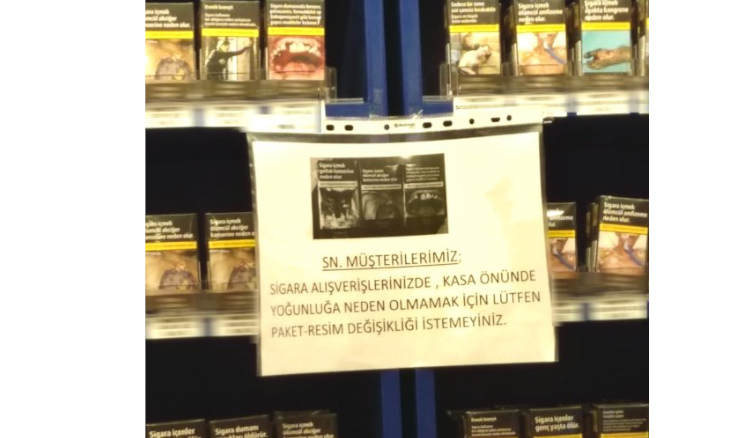Gruesome photos on cigarette packs in Turkey get mixed reactions
Focus group studies regarding recent legislation regarding cigarette packaging has shown that the majority of people surveyed responded positively in the direction of quitting, said Minister of Agriculture and Forestry Bakir Pakdemirli. The legislation, however, has resulted in confusion for those running convenience stores, who now face an entire wall of products that look more or less the same and have more difficulty finding a customer's brand.
Şebnem Babat/ DUVAR
Focus group studies regarding recent legislation regarding cigarette packaging has shown that the majority of people surveyed responded positively in the direction of quitting, said Minister of Agriculture and Forestry Bakir Pakdemirli in a statement earlier this week, though reactions from retailers and consumers have been mixed.
The regulations have required all cigarette packs sold in Turkey to be black, and many of them feature gruesome, unsettling photos.
According to Pakdemirli, 81 pct. of those participating in the study thought about quitting at least once in a day, while 70 pct. said they found cigarettes less satisfying, and 66 pct. said that they started thinking that the cigarettes were of low quality.
The legislation has resulted in confusion for those running convenience stores, who now face an entire wall of products that look more or less the same and have more difficulty finding a customer's brand.
“There are people that don't like the images on the pack. I tell them 'well since you don't like the packs, you might as well quit smoking. Is there a better time than now?,” said Hüseyin, the owner of a convenience store in Istanbul's Kağıthane district.
The regulations have also created a new sub-sector: the sale of cigarette cases made from leather, metal or plastic. One shopowner in the busy Levent district said that they are directing smokers who don't like the new packs toward such cases, and that they are selling.
Ahmet, who runs a convenience store in the Istanbul district of Bakırköy, said that many customers are bothered by the new images on the packs, which include rotten teeth, feet with open wounds, and diseased throats, and that they want to change the packs until they find one that they find acceptable.
 Warning sign in a store which asks the customers not to cause long lines while trying to find a pack with a relatively less bothering package.
Warning sign in a store which asks the customers not to cause long lines while trying to find a pack with a relatively less bothering package. “Sometimes until they find the photo that the want, we have to go through the entire shelf. There are those who are switching from packs to rolling tobacco or even smuggled cigarettes. It is unknown whether or not it is for this reason but some companies are introducing two lira discounts,” Ahmet said.
For one smoker, the new packs weren't enough of an incentive to quit, even if she was perturbed by them: “I can't tell if I'm buying my own cigarettes or not. I didn't like the new packs at all. They are awful. But I'm buying them and smoking without looking at the pack. I just hold it in my hand. These photos are not useful at all, they are just displeasing to the eye. Cigarette smokers are already aware of how real the warnings and images are on the packs,” said Makbule, who has smoked for 25-years.
A former longtime smoker feels differently, saying that increased prices alongside the new packs have a dissuasive effect:
“If I was smoking I would have quit. It would have been motivation to do so. Back when I smoked there was only a liver photo. I used to put a white piece of paper or napkin in front of that photo. I managed to resist but eventually quit. Think about it, if you smoke a pack a day, you have to look at that photo 20 times,” said Bahri, who smoked for 37 years before giving up the habit five years ago.
